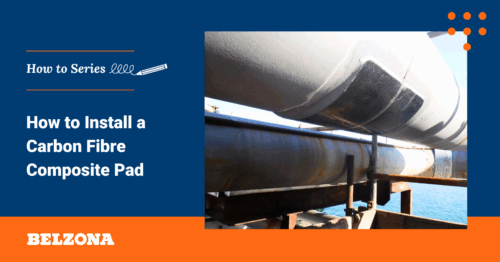Touching the surface
Impact, wear and chemical attack – these are just some of the reasons why concrete floors deteriorate. The surface takes the brunt of these damage mechanisms, resulting in chipping and cracks that create an uneven floor and accentuate any problems further.
Of course, a like-for-like concrete screed repair can be the first option for many, being both a cheap material and readily available. However, this serves only as a temporary barrier for the aforementioned issues – one that they can easily overcome, returning the floor back to its damaged state and negating the “cheap and easy” maintenance method
It’s what’s underneath that counts
That is not to say that the initial problems manifest overnight. Impact and wear damage generally take longer to result in serious deterioration to a well laid concrete floor. However, when factoring in a like-for-like repair, it’s also what’s underneath that counts.
The level of adhesion demonstrated between the original and new concrete is one of the key reasons why surface-level screed repairs are prone to failure. Shrinkage, as well as poor cohesive strength, undermine the new material and make it a gateway for further complications. Overall, this often means a like-for-like repair is unsuitable as a long-term solution.

Prevention from the outset
In comparison, polymeric mortar repair materials are a proven alternative for screed applications on to an uneven floor. Not only is their ease of use and excellent adhesion an advantage, but additional benefits in the form of chemical, impact and abrasion resistance combat the root of these issues. The following video demonstrates how Belzona 4131 (Magma Screed) can be used to quickly and easily restore the damaged top layer of uneven concrete floors.
How to screed an uneven floor: The application process
For this repair, Belzona 4911 (Magma TX Conditioner) and Belzona 4131 were used to bring the flooring back to its original profile. However, before applying the product, any loose concrete was chiselled away. This was then thoroughly cleaned and abraded to expose the aggregate via the use of mechanical scarification equipment.
Belzona 4911 was then used to condition the substrate to ensure superior adhesion for the screed. Immediately afterwards, Belzona 4131 was mixed and applied with a steel trowel. The minimum thickness for Belzona 4131 is ¼ inch/6mm, and the maximum thickness is 2 inches/50mm. Finally, the material was compacted and smoothed over, before being left to fully cure in accordance with the Belzona Instructions for Use.
STEP 1: PREPARE SURFACE WITH GRINDER

STEP 2: MIX CONDITIONER

STEP 3: APPLY CONDITIONER

STEP 4: COMBINE SCREED MIXTURE

STEP 5: APPLY 4131

STEP 6: LEVEL SCREED




